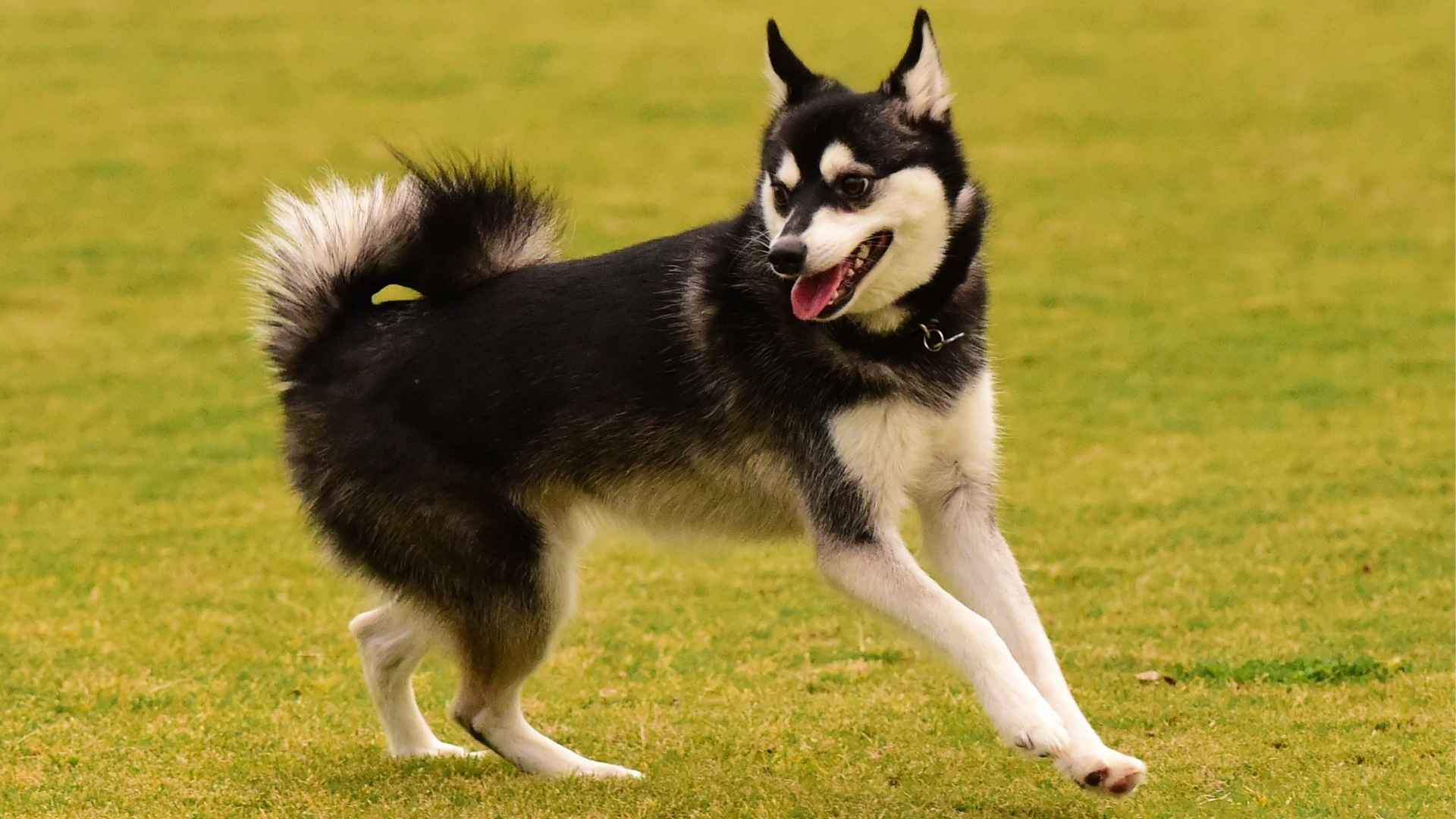You’ve seen a Husky strut by — thick coat, sharp eyes, wild spirit. But what if we told you that dog might not have been a Husky at all? That’s right.
There are dogs out there that look so much like Huskies, even seasoned dog lovers get fooled. These look-alikes share that stunning wolf-like vibe, but each comes with its own quirks, history, and charm. Some are easier to train. Others shed less. A few are even more family-friendly.
If you’re drawn to the Husky’s looks but want a different personality or lifestyle fit, this list is exactly what you need. Whether you’re looking for a new companion or just curious, get ready to discover some surprising breeds that could easily pass as a Husky’s twin.
Dog Breeds that Look Like Huskies
1. Alaskan Malamute
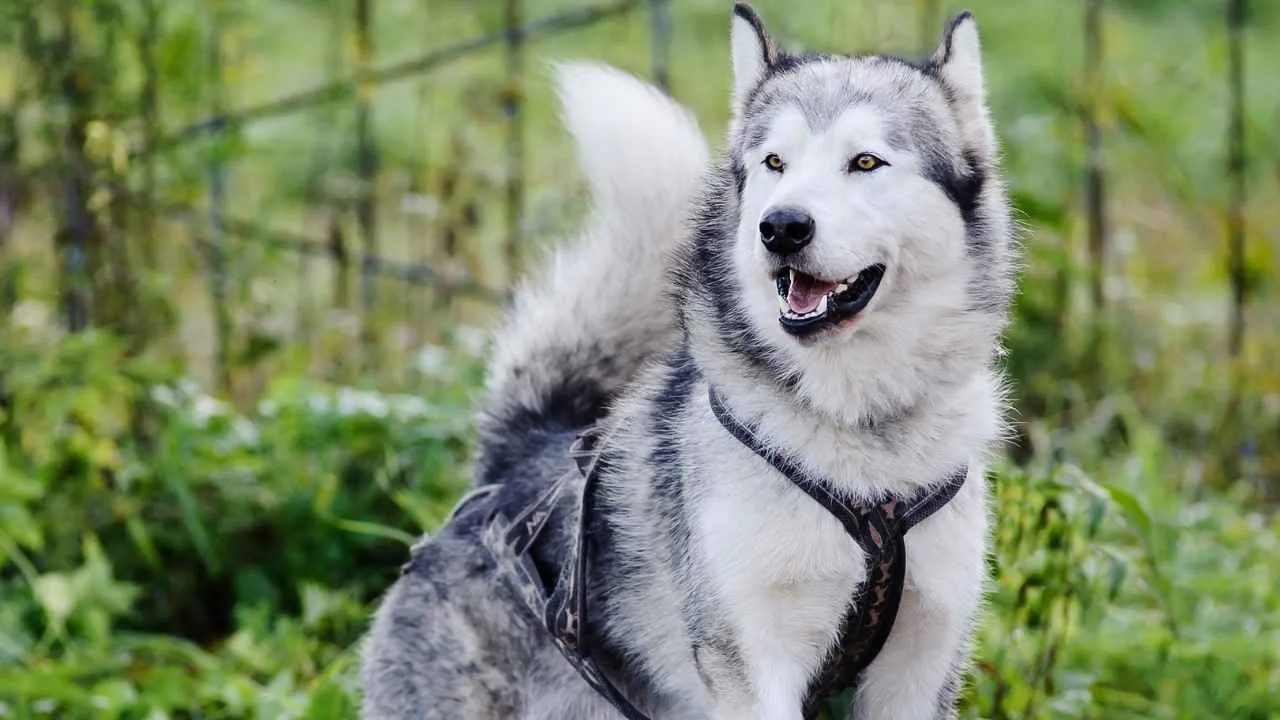
Bred for endurance in cold climates, the Alaskan Malamute is larger and more muscular than its Siberian cousin. Their strength came from hauling heavy loads over icy terrain. They’re true sled dogs, built more for stamina than speed.
Appearance vs Personality
With a thick double coat, upright ears, and sharp almond eyes, they’re easily mistaken for husky-like dogs, as stated in the AKC. But unlike the often vocal Husky, Malamutes tend to be quieter, more independent, and stubborn when it comes to training.
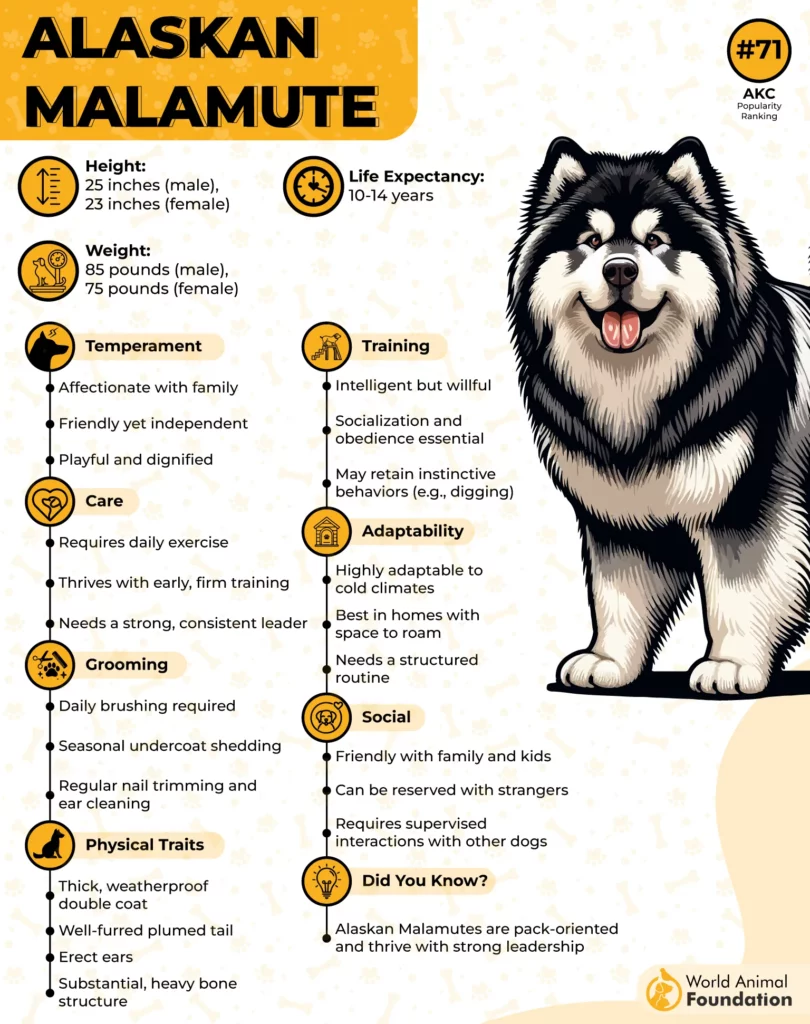
Not a Beginner’s Breed
Despite their charm, they’re not ideal for first-time dog owners. Malamutes require firm leadership, early socialization, and plenty of mental and physical challenges. Without it, they can become bored, destructive, or test boundaries.
Exercise and Commitment
Daily vigorous exercise is non-negotiable for this breed. Think hikes, weight-pulling, or carting—not just a backyard run. They also blow their coat seasonally, so grooming sessions will quickly become a regular part of life.
2. Canadian Eskimo Dog
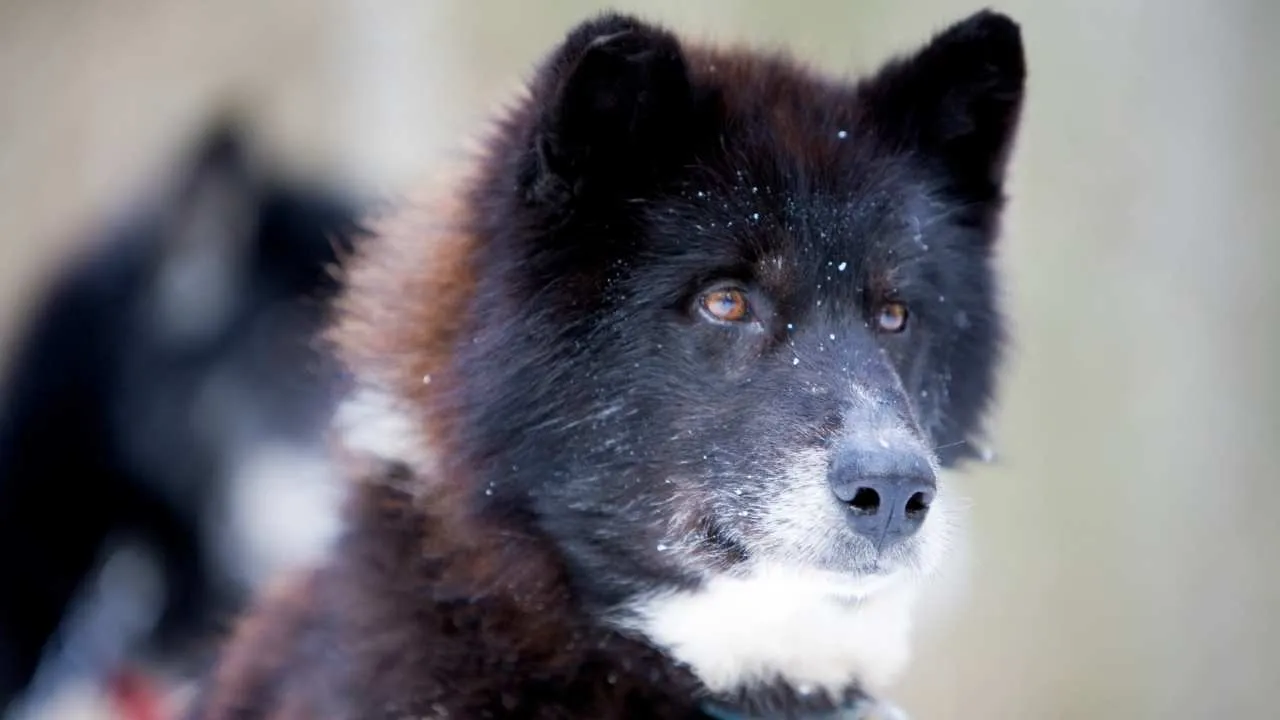
Originally bred to haul heavy sleds and assist with hunting seals, the Canadian Eskimo Dog thrives in harsh climates, as highlighted in Showsight Magazine. These dogs are incredibly resilient and powerful, capable of performing intense physical tasks for extended periods.
Bold, Primitive Temperament
This breed isn’t your average house pet—they retain a strong prey drive and assertive nature. They’re not naturally tolerant of other dogs, especially of the same sex, and require experienced handling to establish pack order.
Intelligent but Independent
As intelligent dogs, they pick up on routines and commands quickly, but don’t expect Labrador-style obedience. Their thinking is often instinct-driven, which makes them effective in search-and-rescue but harder to train for nuanced service roles.
Better Outdoors than Couch Life
They’re not ideal for modern family life or apartment living. These dogs thrive in wide, cold spaces with jobs to do. Though not classic friendly dogs, they bond deeply with those they trust, particularly when raised with consistent leadership.
3. Alaskan Klee Kai
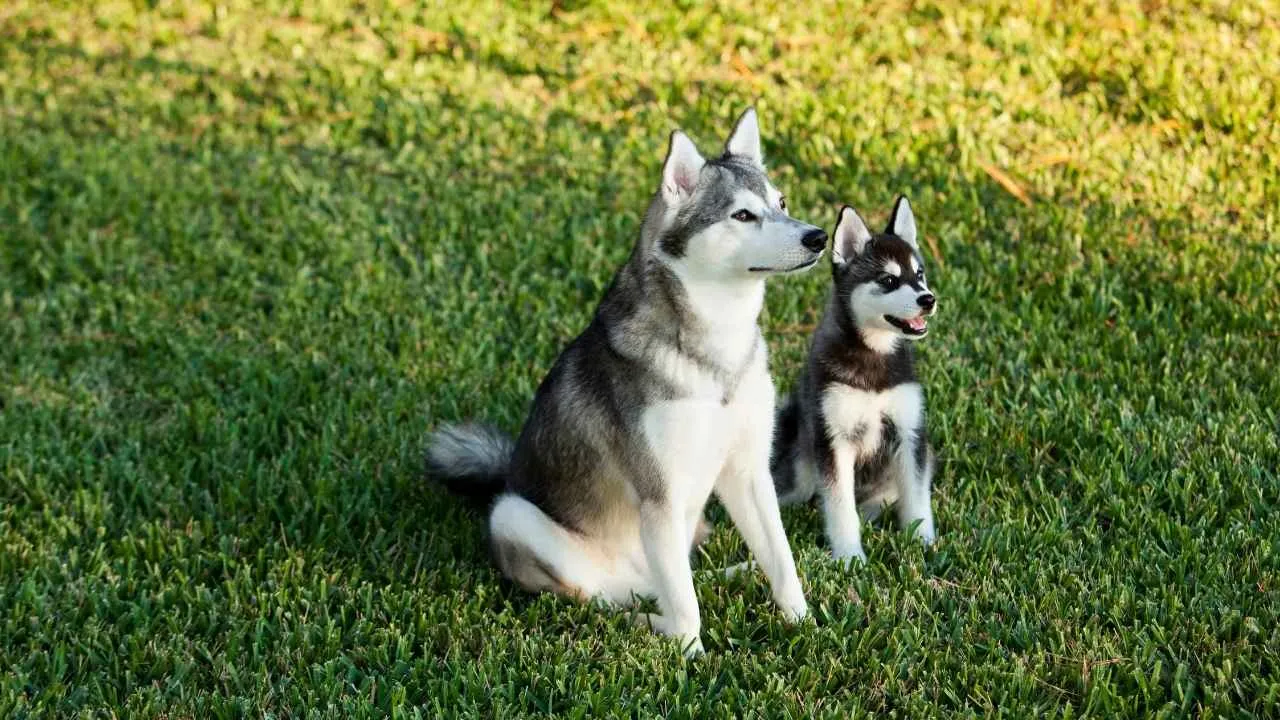
Originally developed in the 1970s to resemble a Husky in a smaller package, the American Klee Kai compact breed retains the alertness and energy of its larger ancestors. Unlike other breeds of their size, they’re extremely agile and always on the lookout.
Not for the Casual Dog Owner
With a sharp mind and intense curiosity, Klee Kais demand mental stimulation daily—think interactive puzzles, advanced obedience routines, or agility sports, as per Life with Klee Kai. Without it, they may become anxious or vocal. They’re not the right breed for someone who’s frequently away or inconsistent with training.
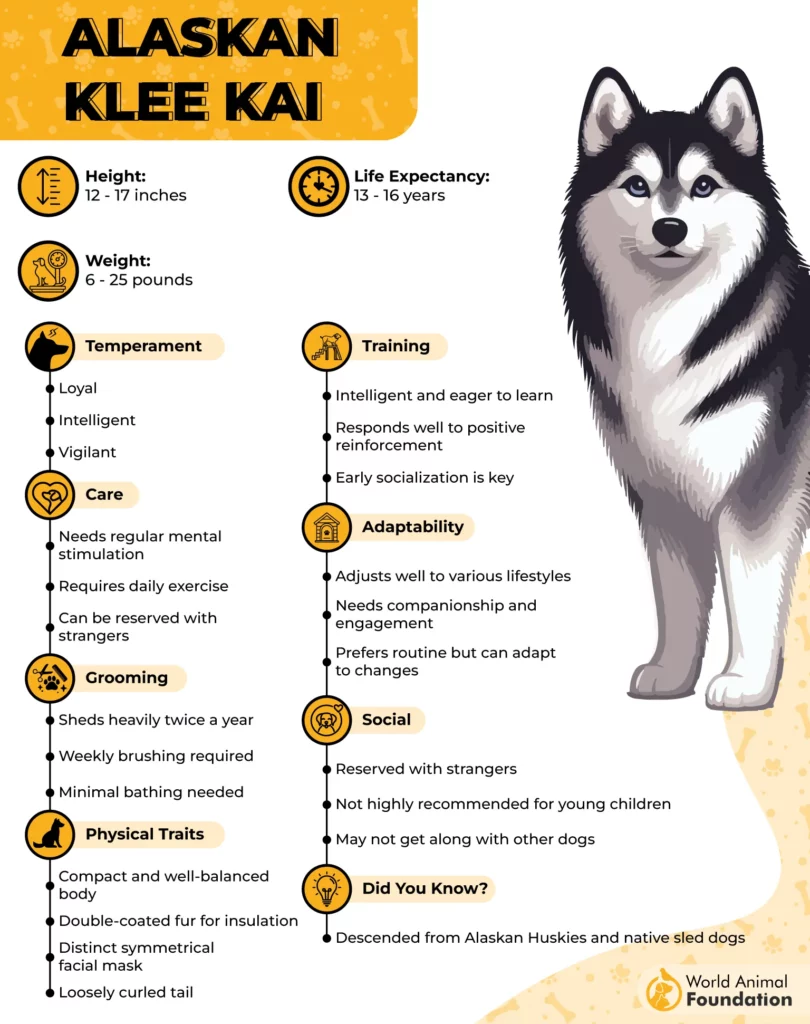
Affectionate Yet Selective
These dogs bond deeply with their inner circle but often remain reserved around strangers. Their loyalty can translate to clinginess—they crave constant companionship and may shadow you from room to room. Yet, their independent streak means they won’t be blindly obedient; they like things on their own terms.
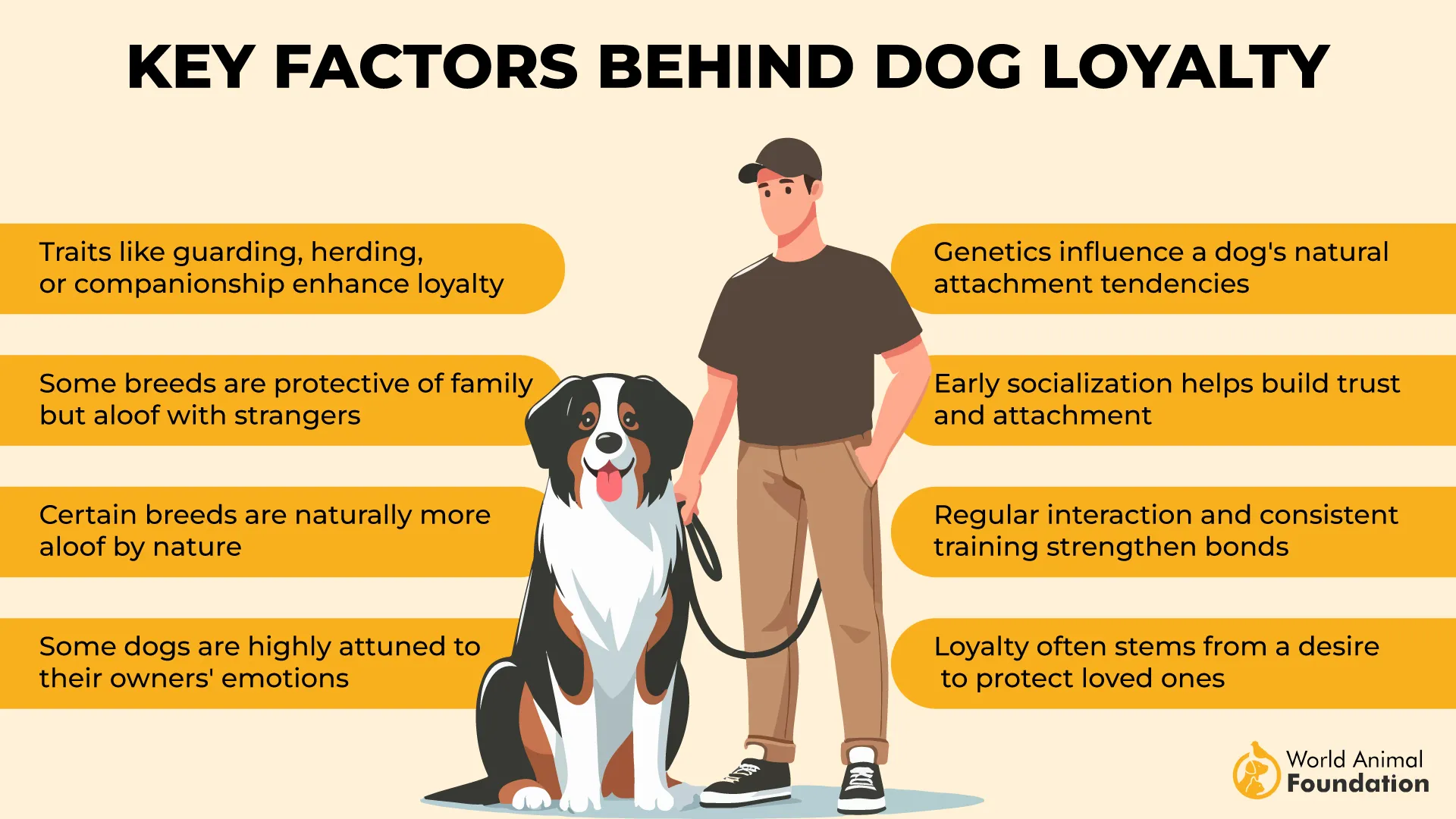
High Maintenance, Emotionally and Mentally
They’re highly sensitive to changes in the environment or mood. Left unstimulated or ignored, they may engage in attention-seeking behaviors like excessive barking or escape attempts. Regular engagement and tailored mental stimulation are must-haves, not extras.
4. Northern Inuit Dog
The Northern Inuit Dog was selectively bred in the UK by crossing German Shepherds, Alaskan Malamutes, and northern breeds like the Siberian Husky, creating a dog with striking lupine features, as highlighted by Europetnet.
Unlike their wild appearance, they are not aggressive but can be overwhelming for unprepared homes due to their energy and emotional sensitivity.
Not for the Casual Owner
These dogs form extremely tight bonds and hate being left alone. That’s why many owners report separation anxiety as a recurring issue. Without proper training and a consistent schedule, their stress can quickly translate into destructive behaviors or escape attempts.
Talkative and Expressive
The Northern Inuit is among the more vocal dogs, known for “talking” in howls, grumbles, and yips. They’re not incessant barkers but love expressing emotions through sound, which can be charming or problematic depending on your lifestyle and neighbors.
High Intelligence, Moderate Trainability
They’re clever but also stubborn. Obedience takes time and patience—they thrive best when training feels like a partnership, not a command. Mental stimulation, not just physical exercise, is critical to managing their instincts and maintaining balance indoors.
5. West Siberian Laika
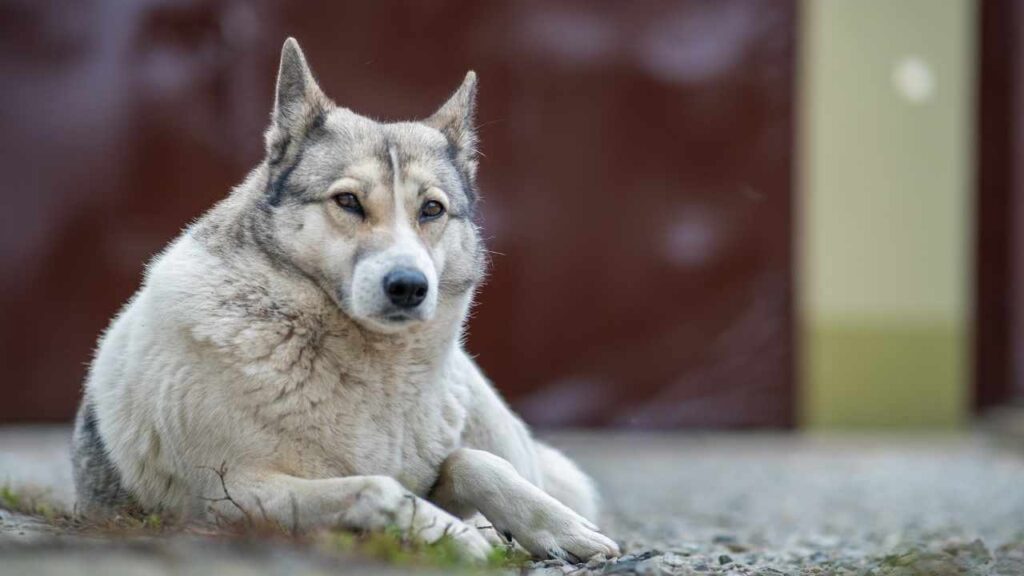
The West Siberian Laika is a spitz-type hunting breed originally developed by the Mansi and Khanty people in Russia.
It retains many primitive traits, including a strong prey drive and intense territorial awareness. These dogs were never meant for city life—they’re deeply tied to forest environments where they were bred to hunt game like squirrels, sable, and even bear.
Not for Beginners
They bond tightly but aren’t overly affectionate. Their independence and assertive nature make them best suited for experienced owners who understand canine hierarchy and consistent boundaries. Training must be firm yet fair—they respond poorly to coercion but thrive when respected.
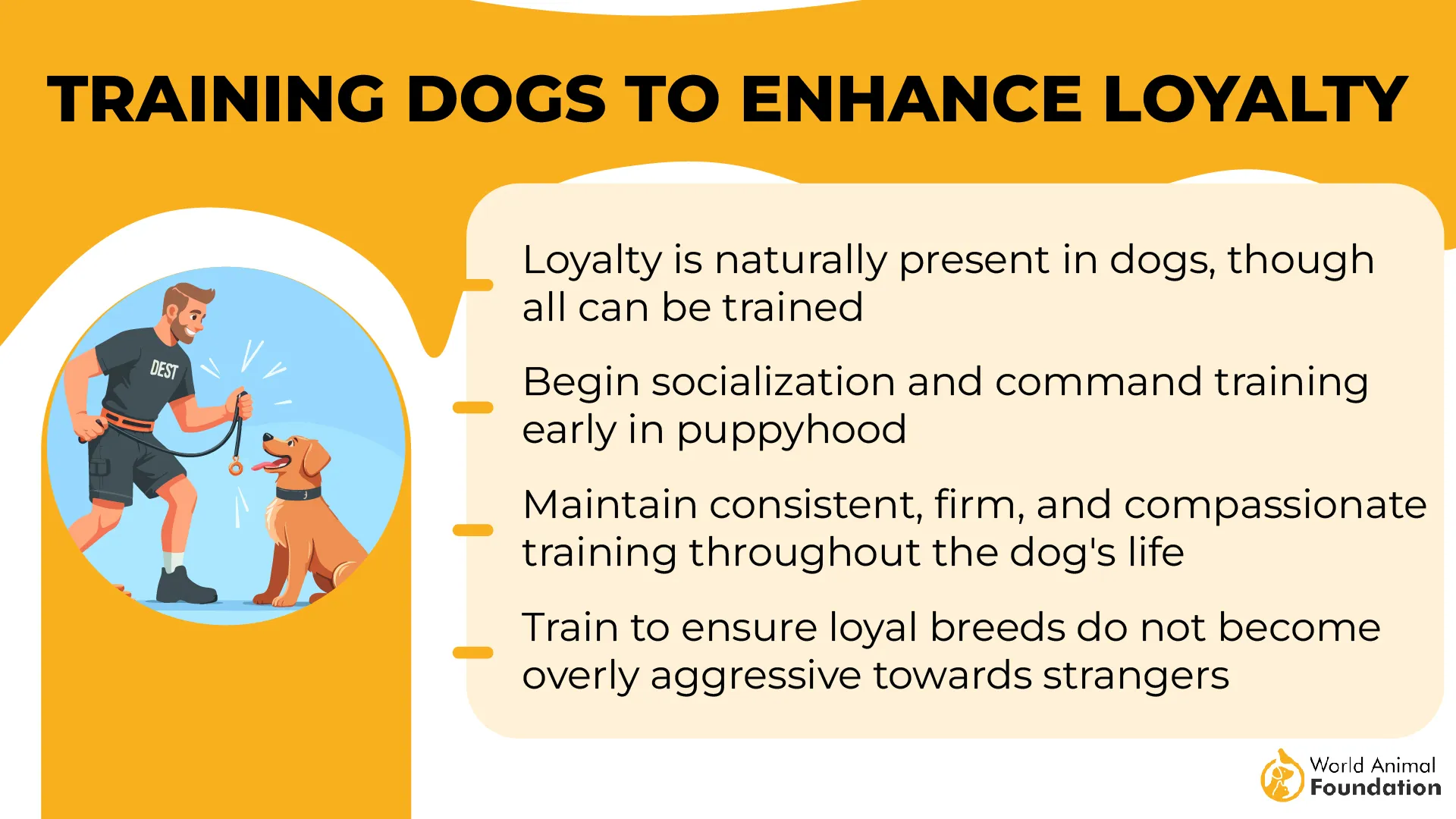
High Stamina, High Expectations
True to their origins, West Siberian Laikas are incredibly active dogs that demand daily exercise. Off-leash hikes, scent tracking, or agility work are ideal outlets. Without rigorous physical and mental outlets, they can become restless or destructive.
Built to Last
Structurally, they are healthy dogs with a lean but powerful frame and excellent bone structure—a trait preserved through function-focused breeding. Combine that with their highly intelligent nature, and you’ve got a working dog that’s agile, alert, and ready to problem-solve in any terrain.
6. Saarloos Wolfdog
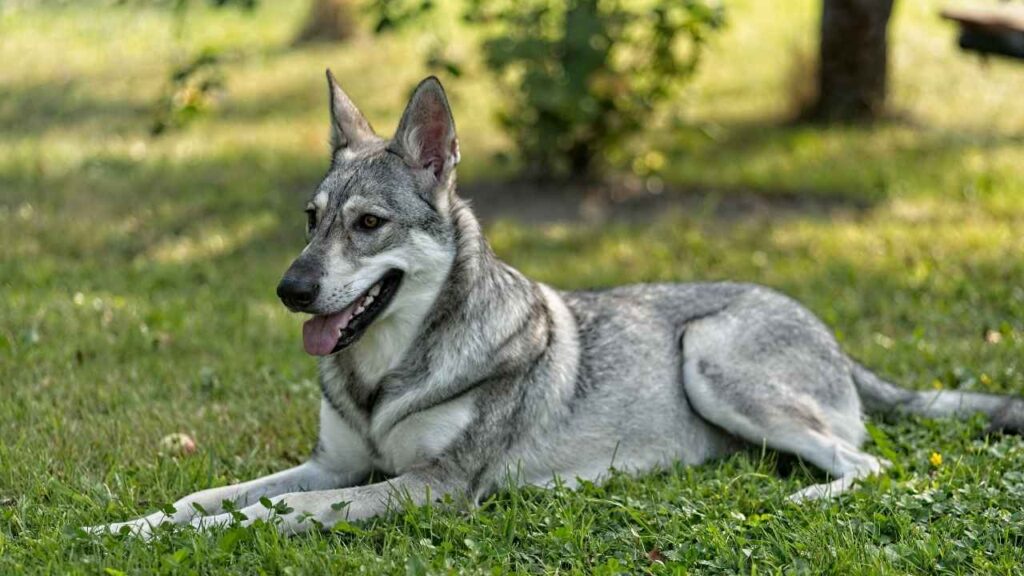
The Saarloos Wolfdog was created by crossing German Shepherds with wild wolves, not just for appearance but to capture primal traits.
The result? A cautious, sensitive dog with heightened flight instincts—not fear, but deep-rooted self-preservation. They don’t bark much but observe everything around them with eerie focus.
Not Suited for Everyone
These dogs don’t crave praise or cuddles—they prefer space and a stable routine. Because of their aloof nature and tendency to shut down under pressure, first-time owners are often unprepared for their unique training needs. They require a confident, calm handler who knows how to earn trust, not demand obedience.
Looks Aren’t Everything
While strikingly beautiful with a thick, dense coat and expressive amber eyes, grooming needs are moderate, more frequent during seasonal shedding. Their beauty hides a deeply instinctive nature that often causes them to struggle with new environments, unpredictable situations, or loud noises.
Coexistence Isn’t Guaranteed
Saarloos Wolfdogs have an intense prey drive, so small pets like rabbits, guinea pigs, or even cats aren’t safe without strict boundaries.
Early socialization helps, but doesn’t override their inherited instincts. Even play with other large dogs must be closely monitored, as their body language is complex and easy to misread.
7. Czechoslovakian Wolfdog
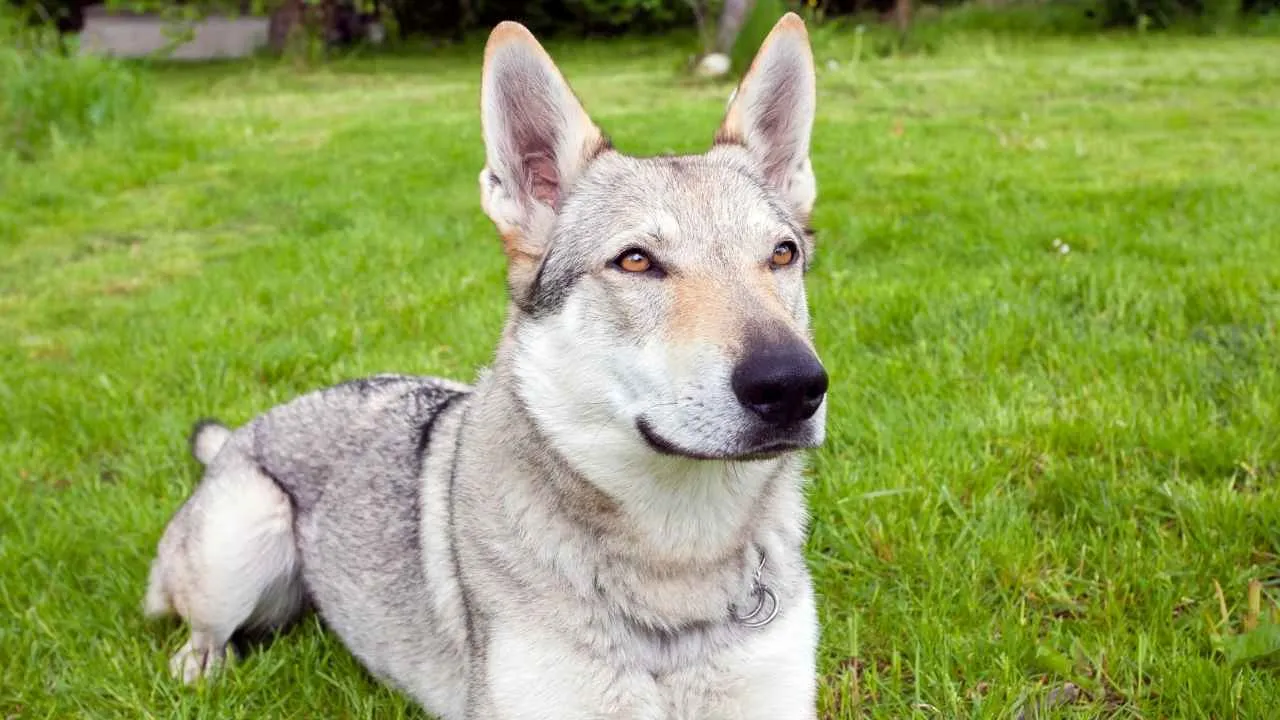
Bred by the Czechoslovak military in the 1950s, this breed is a calculated mix of German Shepherd and Carpathian wolf—engineered for border patrol work.
The result is a physically resilient dog with stamina that outlasts most breeds. These dogs excel in harsh terrains and grueling tasks, making them ideal for specialized search-and-rescue or endurance work.
Complex Social Intelligence
Czechoslovakian Wolfdogs form incredibly strong bonds—but only with those they trust. Unlike typical companion breeds, they don’t automatically warm up to strangers or unfamiliar environments.

Their intelligence shows in how they assess situations and people, sometimes refusing to comply with commands if they don’t “agree” with them.
Not a Dog-Park Candidate
Despite their athleticism, they don’t do well in chaotic or overstimulating social spaces. Even if well-socialized, their natural suspicion and pack-driven instincts can cause them to misinterpret canine signals.
Walks should be structured, not free-for-alls. Off-leash time is best reserved for secure, familiar areas where distraction and conflict are minimal.
Physique with Purpose
Their lean build, long legs, and deep chest give them incredible agility and speed, almost wolf-like in stride. This isn’t a breed that can be “tired out” with a simple jog.
Mental challenges are just as crucial: tracking games, scent puzzles, and structured agility training are all must-haves. Without this, they get frustrated and destructive.
Conclusion
While all these dogs may look like Huskies, their personalities and needs are worlds apart. Some are better suited for rugged adventures, others for smaller households, but each comes with its own special magic. From small dog breeds like the Klee Kai to large working breeds bred for pulling sleds, their beauty hides deep instincts and unique demands.
Choosing the right companion means looking beyond appearance. Do you want a laid-back family pet or a high-energy explorer? Can you offer the mental stimulation they crave and meet their need for daily exercise?
If you’re ready for the commitment, these Husky look-alikes will reward you with loyalty, fun, and a connection that runs deeper than looks. Just remember: the best fit isn’t always the most obvious one.


